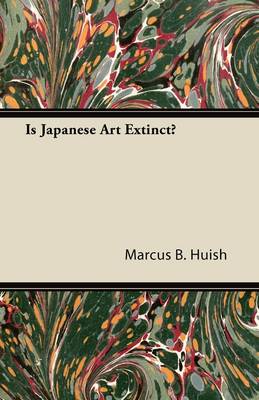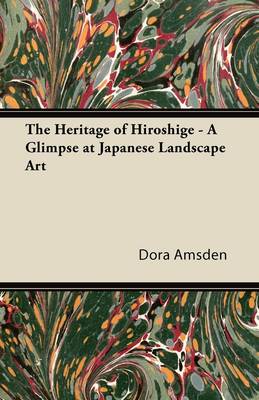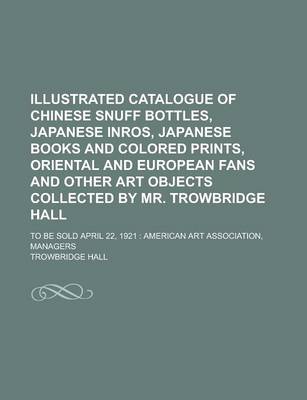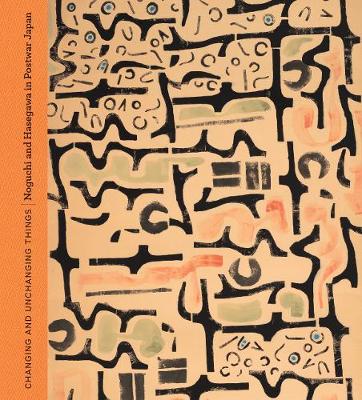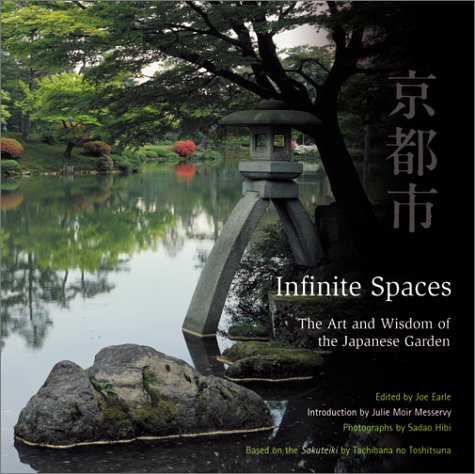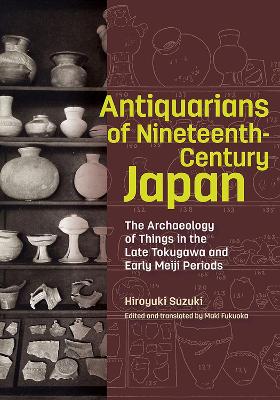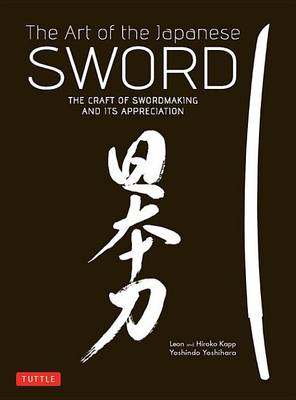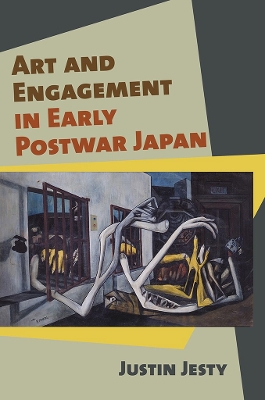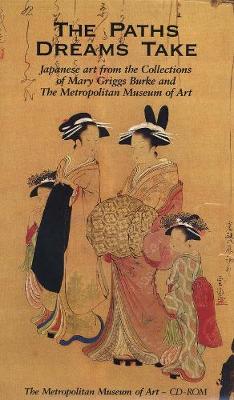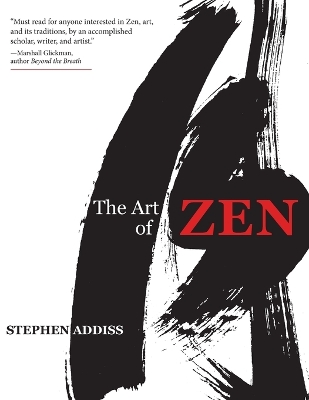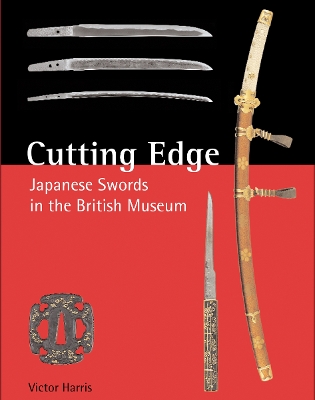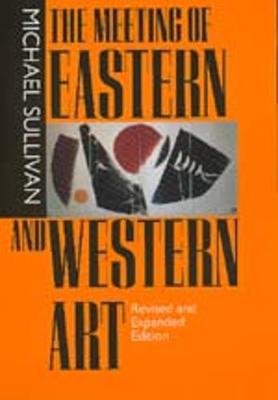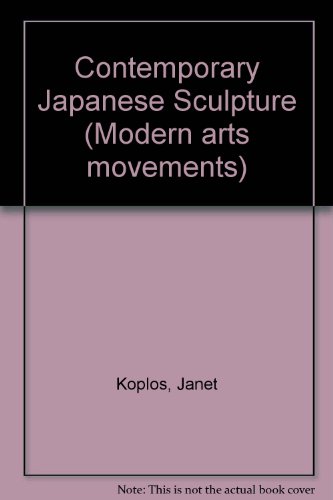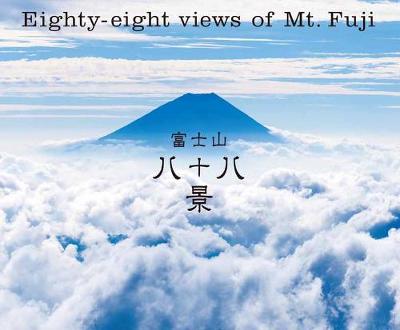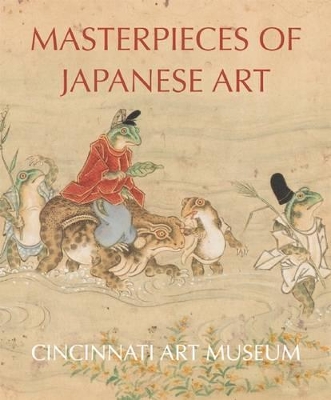The Heritage of Hiroshige - A Glimpse at Japanese Landscape Art
by Dora Amsden
Hiroshige 36 Vistas De Monte Fuji 1858
by Cristina Berna and Eric Thomsen
In May 1950 Isamu Noguchi (1904–88) returned to Japan for his first visit in 20 years. He was, Noguchi said, seeking models for evolving the relationship between sculpture and society—having emerged from the war years with a profound desire to reorient his work “toward some purposeful social end.” The artist Saburo Hasegawa (1906–57) was a key figure for Noguchi during this period, making introductions to Japanese artists, philosophies, and material culture. Hasegawa, who had mingled with the Eu...
Art of the Japanese Garden
by Julie Moir Messervy, Joe Earle, and Sadao Hibi
Japanese gardens have long been revered for their impeccable design, detail and composition, properties which elevate them from being mere gardens to peaceful havens of serenity and sacredness. Now the ancient Japanese Sakuteiki (Notes on Garden Design) -- the quintessential volume on Japanese garden design -- is available for English-speaking readers, alongside gorgeous color photographs of Japan's most famous gardens. Infinite Spaces also includes practical advice and philosophical insights on...
Antiquarians of Nineteenth-Century Japan - The Archaeology of Things in the Late Tokugawa and Early Meiji Periods
by Hiroyuki Suzuki
"Originally published in Japanese, Antiquarians of Nineteenth-Century Japan looks at the approach toward object-based research across the late Tokugawa and early Meiji periods, which were typically kept separate, and elucidates the intellectual continuities between these eras. Focusing on the top-down effects of the professionalizing of academia in the political landscape of Meiji Japan, which had advanced by attacking earlier modes of scholarship by antiquarians, Suzuki shows how those outside...
The Art of the Japanese Sword
by Yoshindo Yoshihara, Leon Kapp, and Hiroko Kapp
In The Art of the Japanese Sword, master swordsmith Yoshindo Yoshihara offers a detailed look at the entire process of Japanese sword making, including the finishing and appreciation of Japanese blades. Japanese sword art stands out in many ways: functionality as a weapon, sophisticated metallurgy and metalsmithing, the shape of the blade itself-all contribute to the beauty of these remarkable weapons. The Art of the Japanese Sword conveys to the reader Japanese samurai sword history and Japane...
Justin Jesty’s Art and Engagement in Early Postwar Japan reframes the history of art and its politics in Japan post-1945. This fascinating cultural history addresses our broad understanding of the immediate postwar era moving toward the Cold War and subsequent consolidations of political and cultural life. At the same time, Jesty delves into an examination of the relationship between art and politics that approaches art as a mode of intervention, but he moves beyond the idea that the artwork or...
The Paths Dreams Take (Metropolitan Museum of Art)
by Elizabeth Hammer and Teresa Russo
This CD-ROM provides a multifaceted introduction to the pleasures and fundamentals of Japanese art. Neolithic ceramics, sacred sculptures, brightly painted folding screens, boldly designed woodblock prints, and intricately embroidered robes are among the seventy-seven art works explored by means of enlarged details, narrated tours of illustrations of classic tales, and poetic and musical excerpts. Based on the exhibition "The Art of Japan from the Mary Griggs Burke Collection of Japanese Art," t...
The Japanese sword has long been appreciated both as a weapon and as an object of art. Only in Japanese culture has the sword been developed to such a level of technological excellence and spiritual importance. As a cutting weapon, the fully developed curved katana, or samurai sword, of the samurai warrior was uniquely effective. As a cultural object, it offers invaluable insights into the social and spiritual history of the Japanese people. Cutting Edge: Japanese Swords in the British Museum o...
Hawk's Well
Okinawan Art in its Regional Context (Sainsbury Institute Occasional Papers, #2)
Themes, Scenes and Taste in the History of Japanese Garden Art (Japonica Neerlandica, #3)
by Wybe Kuitert
The Meeting of Eastern and Western Art, Revised and Expanded Edition
by Michael Sullivan
The meeting of Eastern and Western art is always more than a synthesis; it offers creative possibilities for interaction between East and West, a process in which the great civilizations preserve their own character while stimulating and enriching each other. In this book, Michael Sullivan leads the reader through four centuries of exciting interaction between the artists of China and Japan and those of Western Europe. From Hokusai to van Gogh, Sullivan shows how the study of artistic interpreta...
A survey of contemporary Japanese sculpture, examining the vigour and originality of three-dimensional art in post-war Japan. The book investigates Gutai, a movement in the 1950s that broke traditions and Mono-ha, the Japanese version of Minimalism prevalent in the 1960s. The rest of the book explores the works of some 90 contemporary sculptors, dividing their work into five categories, such as material, time, image, relationship and place. This text is based on interviews, studio visits and obs...
This is the twelfth in a series of volumes documenting the Asian art collections of Alfred Baur (1865-1951) housed in the Baur Foundation, Museum of Far Eastern Art, in Geneva. It gathers together for the first time a group of 121 Japanese Buddhist textiles dating from the 18th and 19th centuries, bought by Alfred Baur in 1927. The assemblage differs from similar collections in the West in not featuring any examples of kimonos or the kesa costume worn by monks, concentrating instead on a type of...
This is the first complete study and reappraisal of the remarkable collection of Japanese art at the Cincinnati Art Museum. It features a wealth of artifacts, including paintings and ceramics, metal objects and weaponry, screens, masks, cloisonne enamel, lacquer ware, ivory carvings, kimonos, and dolls, the majority dating from the Edo period (1615?1868) to the end of the Meiji Period in 1912. In addition to an important introduction by Hou-mei Sung, curator of Asian art, there are contribution...
